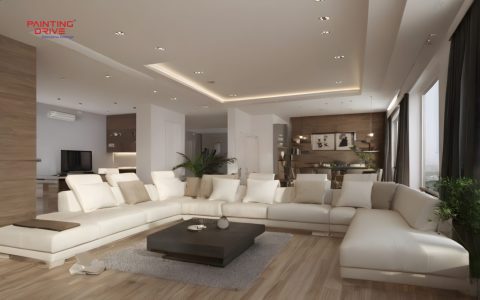Different wall textures can dramatically change the look and feel of a room. Here's a breakdown of some popular options:
Smooth Finishes
- Smooth Wall: Offers a clean, modern look. Requires meticulous preparation as imperfections are easily visible.
- Eggshell: A low-sheen finish that's more durable and easier to clean than flat paint, suitable for most rooms.
Textured Finishes
- Orange Peel: A common texture that resembles the skin of an orange. It's good at hiding imperfections and adding subtle visual interest.
- Knockdown Texture: Achieved by flattening the peaks of orange peel texture, resulting in a more subtle and contemporary look.
- Popcorn Texture: Also known as acoustic texture. Primarily used on ceilings, it helps dampen sound but is difficult to clean and often contains asbestos in older homes.
- Swirl Texture: Created using a brush or trowel in a swirling pattern. Adds a decorative, artisan touch.
- Sand Texture: Sand is added to the paint to create a gritty texture. Provides a rustic or industrial feel.
- Venetian Plaster: A technique that uses thin layers of plaster to create a polished, marble-like appearance.
Specialty Finishes
- Wallpaper: Offers a wide variety of patterns, colors, and textures. Can be paper-based, vinyl, or fabric.
- Wood Paneling: Adds warmth and character to a room. Can be installed as full panels or wainscoting.
- Brick: Exposed brick provides a raw, industrial aesthetic. Can be natural or faux.
- Tile: Durable and water-resistant, making it suitable for kitchens and bathrooms. Available in various materials, colors, and patterns.
Considerations: When choosing a wall texture, consider the style of your home, the amount of natural light, and your budget. Also, factor in the ease of application and maintenance.










